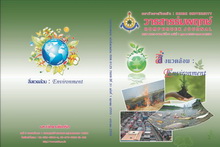ก้าวสู่การพัฒนาอุตสาหกรรมยางธรรมชาติของประเทศไทยอย่างยั่งยืน ด้วยคาร์บอนฟุตพริ้นท์และวอเตอร์ฟุตพริ้นท์
Main Article Content
Abstract
Towards Sustainable Natural Rubber Industry in Thailand with Carbon Footprint and Water Footprint
Thailand has been the world’s largest natural rubber (NR) producer since 1994. Since NR products were being exported to the international market, the requirement of information on sustainable production had been becoming inevitable. To maintain on leadership position of NR producer, it has been therefore challenging for Thai rubber entrepreneurs to seek for appropriate measures to produce environmentally friendly rubber products. This academic paper presented the application of Carbon Footprint (CF) and Water Footprint (WF) as tools for improving environmental performance of Thai natural rubber industries. Both Carbon Footprint and Water Footprint are based on principle of Life Cycle Assessment (LCA) for quantifying greenhouse gases emissions and water consumption, respectively. Scopes of the study and calculation principle of these two footprints are presented. Related studies on greenhouse gases emission and water consumption associated with natural rubber production were reviewed, whereas discussions on threats and opportunities of application Carbon Footprint and Water Footprint on Thai natural rubber industry were also presented.
Article Details
Every article published in the Romphruek Journal of the Humanities and Social Sciences is the opinion and point of view of the authors. Thery're not the viewpoint of Krirk University or the editored department. Any part or all of the articles for pablication must be clearly cited.


